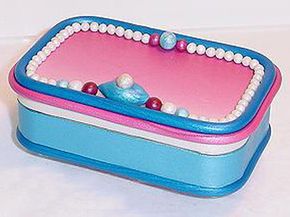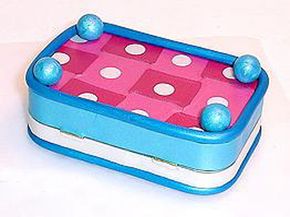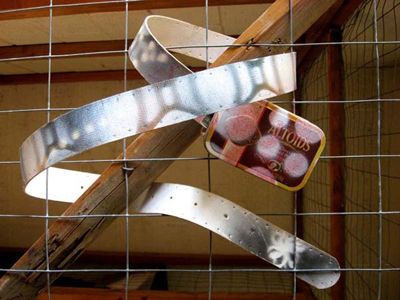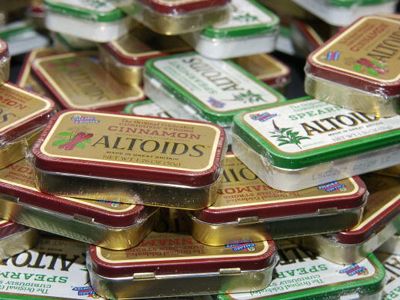Considering the use she gets out of old Altoids tins, it's ironic that Desiree McCrorey doesn't actually eat the mints. "They're too strong for me," she says [source: McCrorey]. That said, the artist is grateful for all of the people in the world who do love Altoids mints; they provide her with plenty of used tins that she uses to inspire her artistic creations. Using old Altoids tins in new and interesting ways makes Desiree McCrorey part of the oft-overlooked subculture of artists known as tinnovators. "It's one of the best recycling projects going today," she says [source: McCrorey].
Desiree began using Altoids tins artistically after she realized that they provided a wonderful foundation for her favorite medium: polymer clay. This type of clay is made of polyvinyl chloride (PVC) and is popular for its pliability and range of colors. Since the materials' colors are embedded in the very particles that make up the substance, polymer clays of different colors can be used to create a marbled effect. The clay can also be easily fired in a standard home oven, which means that artists don't have to shell out lots of money for a kiln [source: DeVoto].
Advertisement
While Desiree certainly appreciates polymer clay as a medium, it's hardly the only one she uses. The artist has worked with everything from traditional tools like paint and fiber to less standard media like food and wood. "It's hard for me to settle on one thing," says McCrorey. "I love variety."
Her love of variety certainly comes through in the wide array of jewelry boxes that McCrorey has made since her interests in polymer clay and used Altoids tins converged. Covered and decorated with ropes and pearls of different colored clay, Desiree's Altoids tin jewelry boxes look almost edible -- like small, delectable cakes. "I must admit when I show people one of my Altoids tin-based creations, I get a real kick from their surprise," McCrorey says. "'You mean it's one of those little mint tins?' That's when I know the transformation was a success, which in turn, feeds the inspiration to decorate more" [source: McCrorey].
Find out how Desiree transforms an Altoids tin into a jewelry box on the next page.
Advertisement



